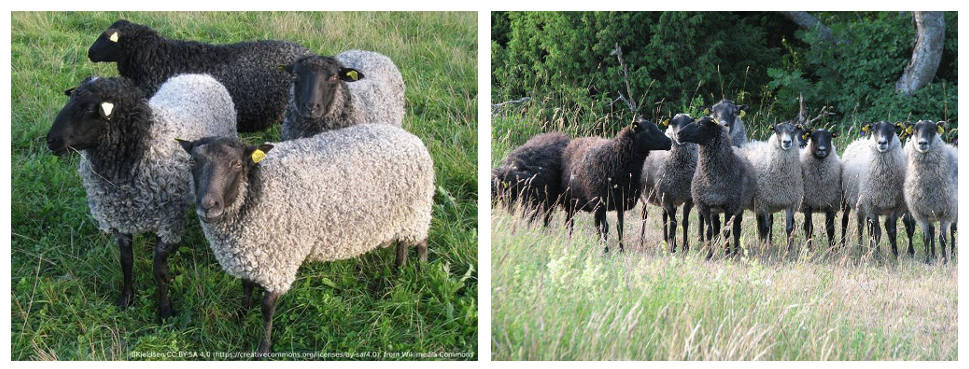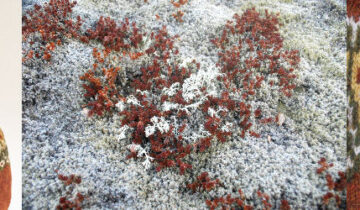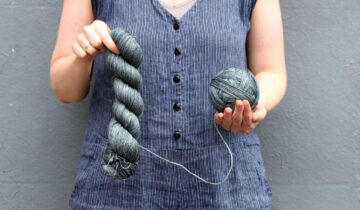Fleece – or wool – varies from one breed of sheep to another, carrying specific structural elements that impact the softness, strength and drape of the yarn. Knowing about the fleece produced by different breeds of sheep is a good way to understand what to look for when buying wool for a new project. Depending on the effect you want to achieve you might favour certain wool over some others.
In this episode of Know Your Sheep we’re going to look at Gotland sheep.

- History:
Originally from the island of Gotland in the Baltic Sea, the Gotland sheep has become one of the most prominent breed in Sweden today. Also known as Palsäu, the Gotland sheep descends from three different breeds: the original Swedish short-tailed sheep, the Karakul and the Romanov sheep. Karakuls and Romanovs were brought back from central Asia by travelling vikings who then proceeded to crossbreed them with the local native short-tailed. Further selection in the 1920s has lead to the Gotland as we know it today. A multipurpose long-wool sheep that produces a close-grained meat and a soft and silky lustrous fleece.
2. Wool:
The Gotland fleece is dense and forms small and well defined locks with a wavy or open curly crimp. Although it classifies as a long wool, its fibre diameter is fairly thin; 28 to 32 microns. This results in a wool that is very soft and silky but still retains the lustre characteristic of the long wools.
The colours of the fleece varies in between dark to light silver grey.

3. Sheep:
Gotlands are medium-sized, finely boned sheep with slender neck and legs. Their muzzle is small and neat. Their ears medium-sized and alert. Both males and females are polled. Lambs are born black but become lighter with age while their faces and legs remain dark all throughout their lives. These hardy sheep are known for their bright, friendly and inquisitive nature.
4. Yarns:
Gotland wool has a tendency to felt therefore most Gotland bases are mixed to another fibre in order to bring some extra strength to the yarn. Its natural grey fleece is ideal to create a wide array of muted tones. That is why so many hand-dyers have recentely introduced Gotland into their collection.

With its 75% BFL and 25% Gotland, LITLG – Hinterland is both soft and strong. It is also fluffy creating a nice soft halo around the thread similar to those found around mohair blends. If you’re into alpaca and other soft and fluffy yarns Hinterland should be right up your street.
There’s been a few projects cast on with Hinterland since we received it. Kate and Wendy have started – and nearly finished – the Love Note Jumper by Tin Can Knits. I am about to cast on the Blondie Cardigan by Amy Appel. Keep your eyes open as we’ll soon be reviewing these projects on the blog.
Until Next Time… Happy Knitting!




 No products in the basket.
No products in the basket.